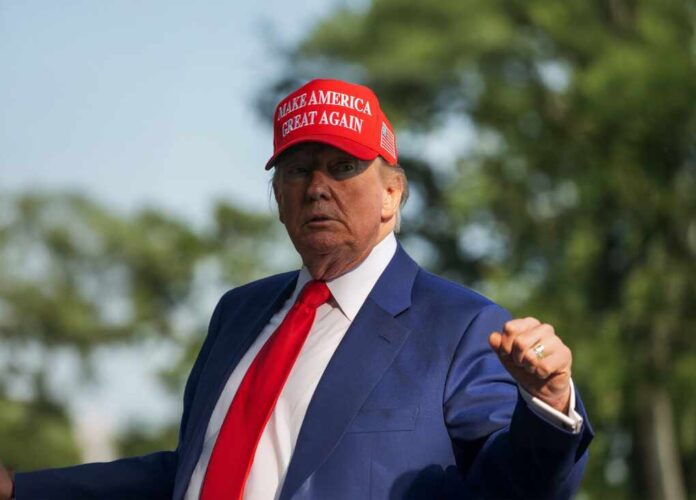
President Trump’s new “Golden Dome” missile defense initiative launches the largest ever shield over America, sparking fierce debate over its cost, secrecy, and the urgent need to defend the homeland against rising global threats.
Story Snapshot
- The Golden Dome is the most ambitious U.S. missile defense plan ever, featuring a four-layer shield and 11 missile batteries across the nation.
- The Trump administration emphasizes rapid deployment, advanced technology, and national security, with $25 billion already allocated for early development.
- Secrecy shrouds key details, while defense contractors compete intensely for lucrative contracts and influence over requirements.
- Critics voice concerns over feasibility, massive costs, and potential escalation of the global arms race, igniting debate about priorities and transparency.
Golden Dome: Defending America’s Heartland
In January 2025, President Trump unveiled the “Golden Dome,” a sweeping plan to erect a four-layer missile defense shield over the United States, including Alaska and Hawaii. This marks the most ambitious homeland defense proposal in U.S. history, dwarfing prior efforts and aiming to counter advanced threats from Russia, China, North Korea, and Iran. Eleven short-range missile defense batteries will be strategically stationed, integrating cutting-edge technologies such as space-based interceptors and artificial intelligence-driven command systems.
Watch: Trump unveils Golden Dome plan
The initiative draws on lessons from past programs, notably the Reagan-era “Star Wars” Strategic Defense Initiative and Israel’s Iron Dome system, seeking to overcome past technical and fiscal limitations. Unlike prior regional or theater-based systems, Golden Dome aspires to deliver comprehensive national coverage, reflecting a significant strategic shift in U.S. defense posture. Rising missile threats and advances in hypersonic technology have fueled calls for such robust homeland protection, while the Trump administration’s campaign centered missile defense as a core pillar of national security policy.
Exclusive: Pentagon Golden Dome to have 4-layer defense system, slides show | Reuters https://t.co/KtlBJyTE1J
— Brian K. Welch (@WorldAccToWelch) August 13, 2025
Secrecy, Industry Competition, and Congressional Scrutiny
Official details remain tightly guarded, with the administration releasing few specifics despite mounting public and congressional interest. The fiscal year 2026 budget already earmarks $25 billion for early-stage research and development, and total program costs could exceed $500 billion. Major defense contractors—including Lockheed Martin, Raytheon, Northrop Grumman, and Boeing—are mobilizing to compete for contracts, with Lockheed Martin launching a command-and-control incubator in Virginia and planning a test of space-based interceptors by 2028. The defense sector is describing Golden Dome as a “Manhattan Project-scale” undertaking, with contractors aggressively promoting their technological readiness and lobbying for influence over program requirements.
Congress wields significant oversight power, controlling funding and assessing the program’s feasibility and value. State and local governments in host locations for the batteries anticipate economic benefits but remain alert to security and sovereignty concerns. The Trump administration’s emphasis on urgency and innovation is met with both enthusiasm and skepticism, particularly as the project becomes a focal point of debate ahead of the 2026 midterm elections.
Fiscal, Strategic, and Social Implications
Golden Dome’s short-term effects include a surge in defense research and industry activity, promising economic opportunity but also raising questions about fiscal responsibility and prioritization. The secrecy surrounding technical specifications and deployment plans has fueled public debate over transparency, accountability, and the risks of government overreach. The lack of public detail and the administration’s control over information have led some to question accountability, even as the need to address evolving missile threats is universally recognized.
Sources:
Center for Arms Control and Non-Proliferation (Fact Sheet: Golden Dome)
Lockheed Martin (Golden Dome for America)
Axios (Defense industry is filling the Golden Dome vacuum)

























